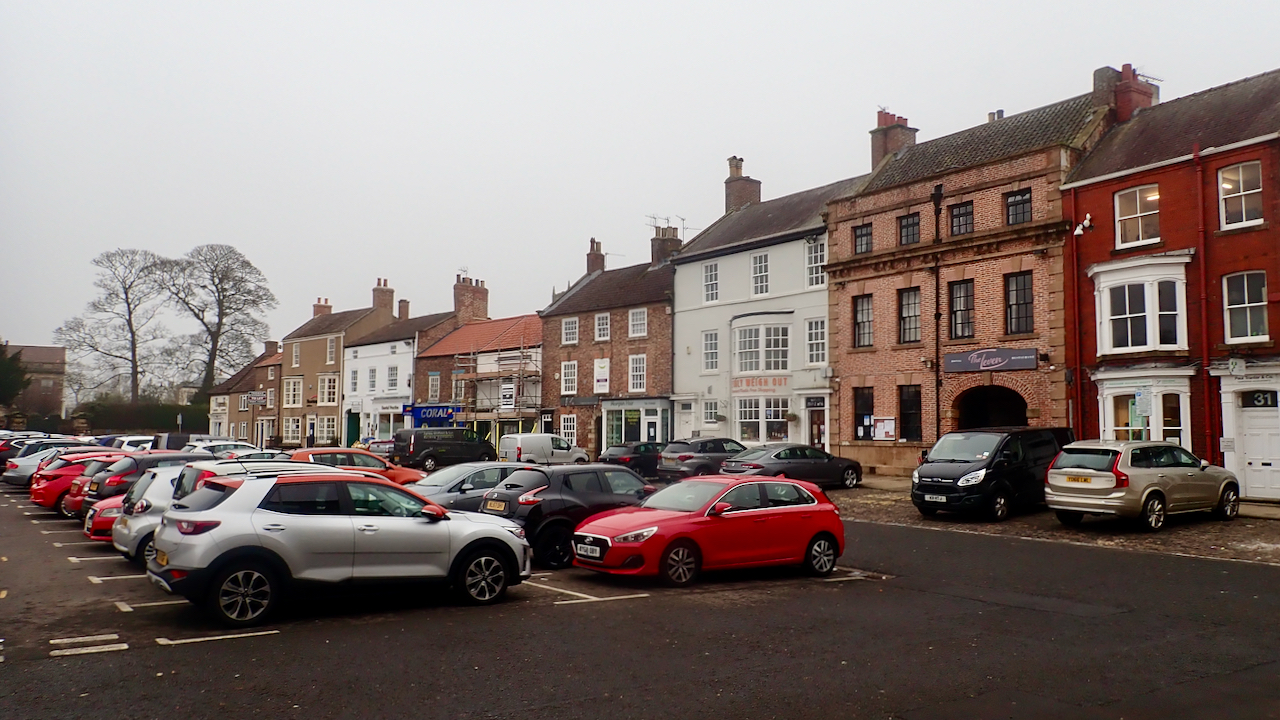So ran the headlines on the morning of Saturday, 24 October, 1863 in provincial newspapers throughout the country. From Guernsey to Stornaway. Reports were syndicated in those days, often repeating verbatim the same wording.
It was a report that I had come across when researching the arsonist vicar post of two days ago. But the more I delved, the more I discovered, and the more the intricacy opened up. So much that the history is too big for me to write up in a single evening. I will therefore post into two or three instalments, not necessarily on consecutive days. I have limited myself to two newspaper reports: the York Herald1“MURDER BY A FARMER IN THE NORTH-RIDING.” York Herald, 24 Oct. 1863, p. 9. British Library Newspapers, link-gale-com.ezproxy.is.ed.ac.uk/apps/doc/R3211101734/GDCS?u=ed_itw&sid=GDCS&xid=d0a4a53d. Accessed 1 Mar. 2021.2“THE STOKESLEY MURDER.” York Herald, 24 Oct. 1863, p. 5. British Library Newspapers, link-gale-com.ezproxy.is.ed.ac.uk/apps/doc/R3211101700/GDCS?u=ed_itw&sid=GDCS&xid=db190b36. Accessed 28 Feb. 2021., and the Yorkshire Gazette3“Extraordinary Murder near Stokesley.” Yorkshire Gazette, 24 Oct. 1863, p. 3. British Library Newspapers, link-gale-com.ezproxy.is.ed.ac.uk/apps/doc/JA3231084785/GDCS?u=ed_itw&sid=GDCS&xid=7405f68d. Accessed 1 Mar. 2021. which seem the most comprehensive.
So to begin, on the Monday of that week, three farmers from near Stokesley, Bradshaw Graham, Richard Robinson and William Johnson were drinking together at the Golden Lion, in the town. (In the photo, it’s the traditional looking coaching inn on the right. It has since, in the not too distant past, changed its name to Chapter’s Hotel, but I see now its called The Leven. I can’t keep up.) Certainly Graham and Johnson were on good terms, and had lately helped each other out by sharing the threshing of their corn.
All three left together late in the evening to walk home. Graham farmed at Newham Hall, Robinson at Tanton Dykes and Johnson at Hemlington. Robinson soon departed company after offering the two others, “both being excited by liquor” to spend the night with him. It seems Graham may have been tempted but Johnson, who had the furthest to walk persuaded him to carry on, saying he had arranged his servant to meet him with a horse.
And sure enough, when they were at the village of Newby, Johnson’s man appeared with the horse. Johnson offered to ride pillion with Graham, who refused. Johnson then mounted, and again urged Graham on the back, but he declined. Johnson commented that it was because Graham was too proud, being “in a better position than Johnson”. The two men then started to bicker, with Johnson saying if Bradshaw gave him any more “‘chaff’ he would wring his neck”. When Graham made a defiant reply, Johnson got off his horse and squared up to Graham, who hit him on the side of the head with his stick. They scuffled and both fell on the ground. Johnson called to his man to come and help him, who lifted him up, he fell again. This happened two or three times after which he never spoke again. It seems that Johnson had not live two minutes after being struck.
Here the reports do vary. One said that Graham took his pen knife and stuck him in the region of the heart producing instant death. Another said that it was only after a cart had been obtained from a nearby farm, that it was found that Johnson had been stabbed just over the heart with a short instrument, about half or three-quarters of an inch wide. The police were sent for and Graham was taken into custody at Stokesley lock-up.
Again, there is a discrepancy in the reports, the Yorkshire Gazette saying that Graham was apprehended at his own house before daylight on the following morning. When charged with the crime of stabbing his friend to the heart, Graham had asked “‘Is he dead?’ in a tone of bewilderment”.
An inquest was held, and a verdict of “Wilful murder” returned against Graham.
Johnson was buried at Carlton-in-Cleveland, two years before George Sanger arrived to be the new vicar (see previous post for relevance).
And so ends Part 1 of this tale. Part 2 will follow when we have another dull miserable day on the North York Moors.
- 1“MURDER BY A FARMER IN THE NORTH-RIDING.” York Herald, 24 Oct. 1863, p. 9. British Library Newspapers, link-gale-com.ezproxy.is.ed.ac.uk/apps/doc/R3211101734/GDCS?u=ed_itw&sid=GDCS&xid=d0a4a53d. Accessed 1 Mar. 2021.
- 2“THE STOKESLEY MURDER.” York Herald, 24 Oct. 1863, p. 5. British Library Newspapers, link-gale-com.ezproxy.is.ed.ac.uk/apps/doc/R3211101700/GDCS?u=ed_itw&sid=GDCS&xid=db190b36. Accessed 28 Feb. 2021.
- 3“Extraordinary Murder near Stokesley.” Yorkshire Gazette, 24 Oct. 1863, p. 3. British Library Newspapers, link-gale-com.ezproxy.is.ed.ac.uk/apps/doc/JA3231084785/GDCS?u=ed_itw&sid=GDCS&xid=7405f68d. Accessed 1 Mar. 2021.

Leave a Reply